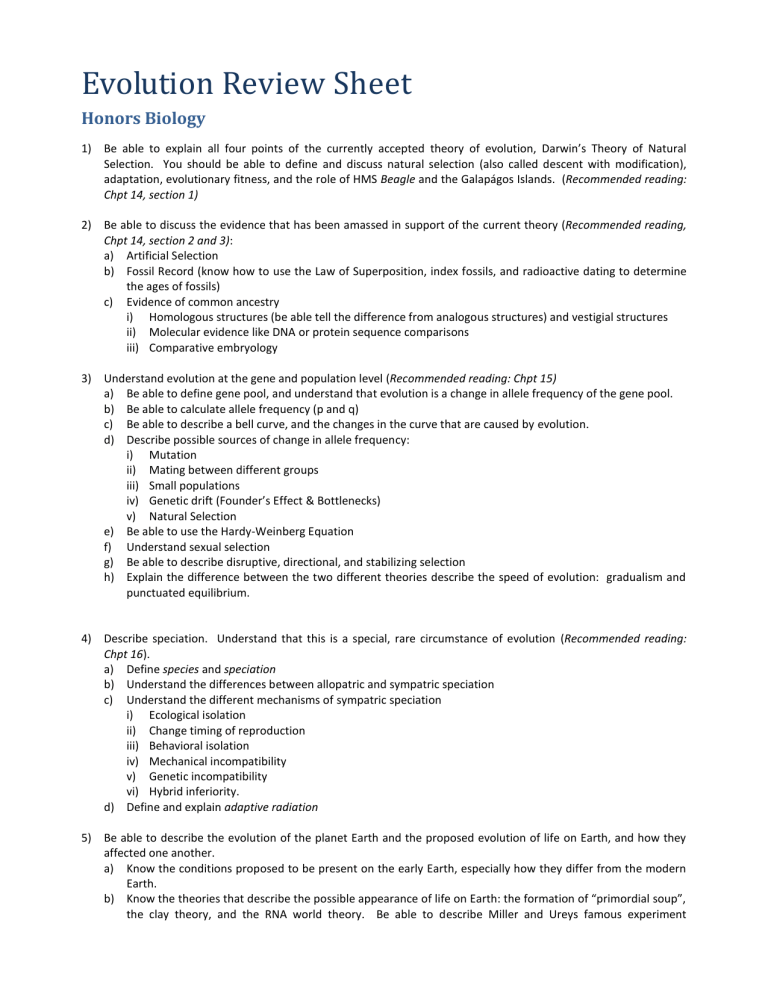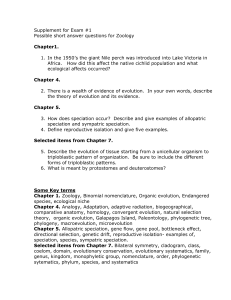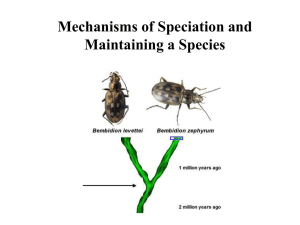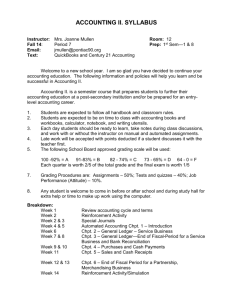Evolution Exam Review Sheet

Evolution Review Sheet
Honors Biology
1) Be able to explain all four points of the currently accepted theory of evolution, Darwin’s Theory of Natural
Selection. You should be able to define and discuss natural selection (also called descent with modification), adaptation, evolutionary fitness, and the role of HMS Beagle and the Galapágos Islands. (Recommended reading:
Chpt 14, section 1)
2) Be able to discuss the evidence that has been amassed in support of the current theory (Recommended reading,
Chpt 14, section 2 and 3): a) Artificial Selection b) Fossil Record (know how to use the Law of Superposition, index fossils, and radioactive dating to determine the ages of fossils) c) Evidence of common ancestry i) Homologous structures (be able tell the difference from analogous structures) and vestigial structures ii) Molecular evidence like DNA or protein sequence comparisons iii) Comparative embryology
3) Understand evolution at the gene and population level (Recommended reading: Chpt 15) a) Be able to define gene pool, and understand that evolution is a change in allele frequency of the gene pool. b) Be able to calculate allele frequency (p and q) c) Be able to describe a bell curve, and the changes in the curve that are caused by evolution. d) Describe possible sources of change in allele frequency: i) Mutation ii) Mating between different groups iii) Small populations iv) Genetic drift (Founder’s Effect & Bottlenecks) v) Natural Selection e) Be able to use the Hardy-Weinberg Equation f) Understand sexual selection g) Be able to describe disruptive, directional, and stabilizing selection h) Explain the difference between the two different theories describe the speed of evolution: gradualism and punctuated equilibrium.
4) Describe speciation. Understand that this is a special, rare circumstance of evolution (Recommended reading:
Chpt 16). a) Define species and speciation b) Understand the differences between allopatric and sympatric speciation c) Understand the different mechanisms of sympatric speciation i) Ecological isolation ii) Change timing of reproduction iii) Behavioral isolation iv) Mechanical incompatibility v) Genetic incompatibility vi) Hybrid inferiority. d) Define and explain adaptive radiation
5) Be able to describe the evolution of the planet Earth and the proposed evolution of life on Earth, and how they affected one another. a) Know the conditions proposed to be present on the early Earth, especially how they differ from the modern
Earth. b) Know the theories that describe the possible appearance of life on Earth: the formation of “primordial soup”, the clay theory, and the RNA world theory. Be able to describe Miller and Ureys famous experiment
modeling the primordial soup. Be able to describe the Law of Parsimony and the traits predicted of the first life form. c) Know the dates of the formation of Earth, appearance of life, evolution of photosynthesis, appearance of eukaryotes, the appearance of multicellular life, and the invasion of land. d) Describe Mass Extinction Events.
6) Be able to list the eight levels of classification (domain, kingdom, phylum, class, order, family, genus, species).
Understand how they progress from large, general categories to small, specific categories.
1.
Be able to describe what factors are used to sort organisms into the different taxa. Know which are more scientifically valid than others are.
2.
Be able to correctly determine and write an organism’s scientific name from their classification scheme:
Homo sapiens or
Homo sapiens
3.
You are responsible for describing the characteristics of the following taxa: i.
Domains: Bacteria, Archaea, and Eukarya ii.
Kingdoms (of Domain Eukarya): Animalia, Plantæ, Protista, Fungi











